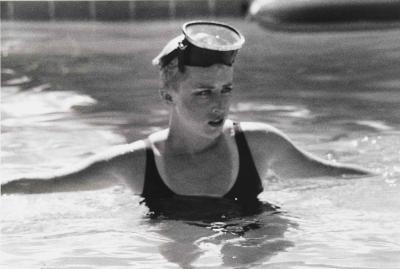With so many pre-eminent American artists associated with the East End, it is not surprising that the Whitney Museum of American Art would feature many of them in the inaugural exhibition for its new home in New York City’s meatpacking district opening to the public on Friday.“America Is Hard to See” includes work by more than 40 artists who have had long associations with the area, were frequent visitors, or completed significant works here, and almost half of them are women.It is striking to see significant works by Lee Krasner, Lynda Benglis, Michelle Stuart, Cindy Sherman, Barbara Kruger, Vija Celmins, Lee Bontecou, Josephine Meckseper, Elizabeth Peyton, Sue Williams, and Hedda Sterne on view, and they are just the ones with the strongest ties here. Hannah Wilke, Joan Mitchell, Agnes Martin, Susan Rothenberg (who lived in Sag Harbor for a decade, even though she is now most associated with New Mexico, where she has lived for the past 25 years), Nan Goldin, and Carolee Schneeman, whose infamous performance "Interior Scroll" took place at Ashawagh Hall but who has visited the area only occasionally, are some of the other powerful women artists in the exhibition who have some association here.The list of male artists will not be as surprising, for the most part. It would be more noteworthy if the museum did not include work by Jackson Pollock, Arshile Gorky, Franz Kline, Willem de Kooning, Roy Lichtenstein, Richard Prince, David Salle, Chuck Close, Tony Smith, Keith Sonnier, Richard Serra, Robert Gober, Mark Rothko, John Chamberlain, James Rosenquist, or Andy Warhol, which, of course, it did. A couple of delightful inclusions that are less obvious are Alfonso Ossorio, who is quite famous here but not as internationally celebrated as some of his circle, and Gerald Murphy, an inspired choice from a decade not tied to the artist colonies of the early and mid-20th century for which this area is best known. His “Cocktail,” from 1927, was drawn in pencil and painted in oil over three months with a “teeny tiny paintbrush,” according to Laura Donnelly, his granddaughter and The Star’s food editor. A frequent and involved visitor to the South Fork, Ray Johnson, who chose to end his life by jumping off the bridge to North Haven and swimming out to sea, and who sent a volume of his "Mail Art" work to The Star, is represented with a 1958 collage, “Hand Marilyn Monroe.”Other artists with surprising or tangential connections to the East End who are in the show include Stuart Davis, Robert Henri, Robert Rauschenberg, Jasper Johns, George Bellows, Matthew Barney (who lived in Orient from 1996 to 2001), and Bruce Nauman, who spent nine months working in Roy Lichtenstein’s studio in 1968. The Parrish Art Museum’s East End Stories website was helpful in providing some of the details and background included here.
Published 6 years ago
Last updated 6 years ago

